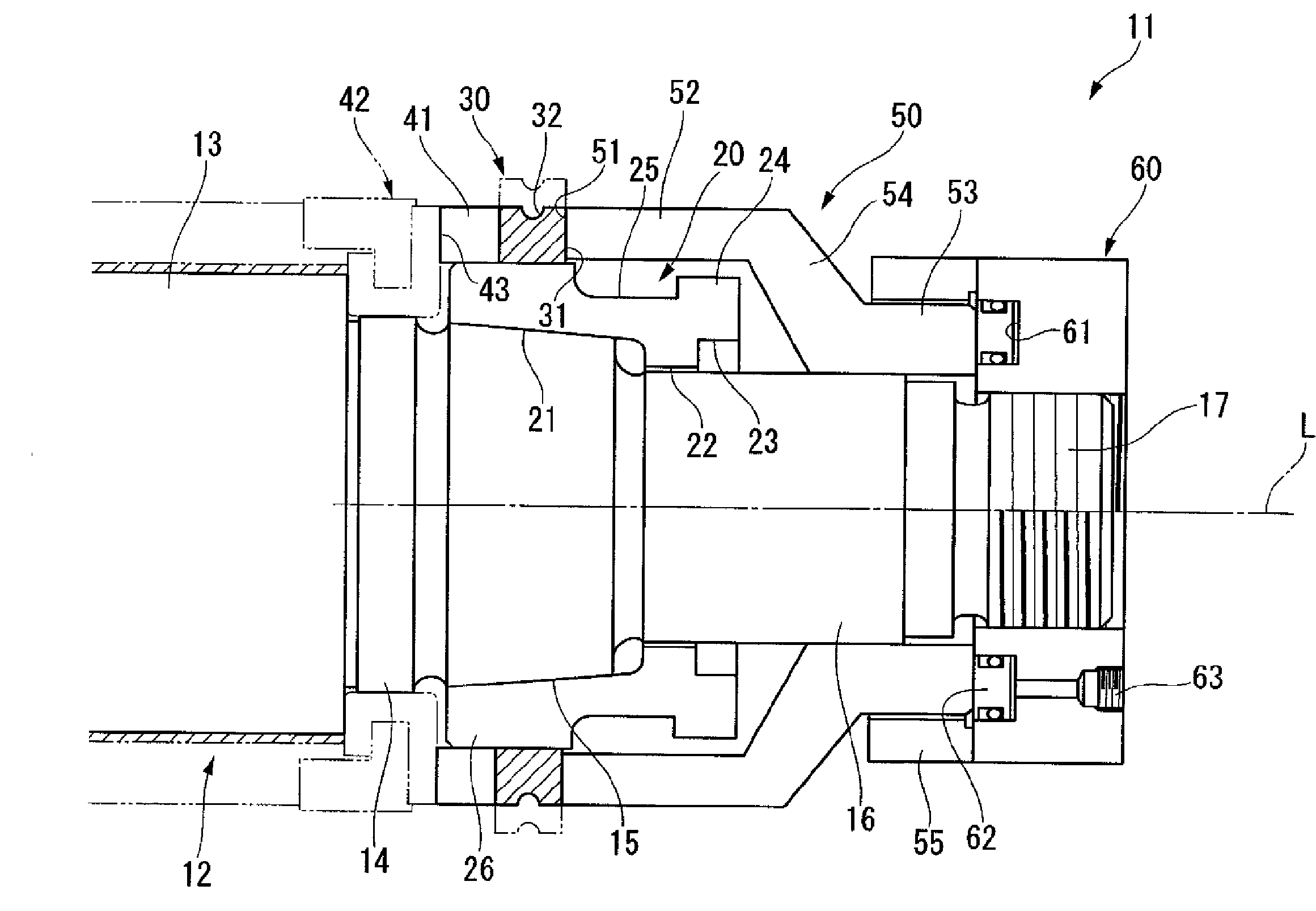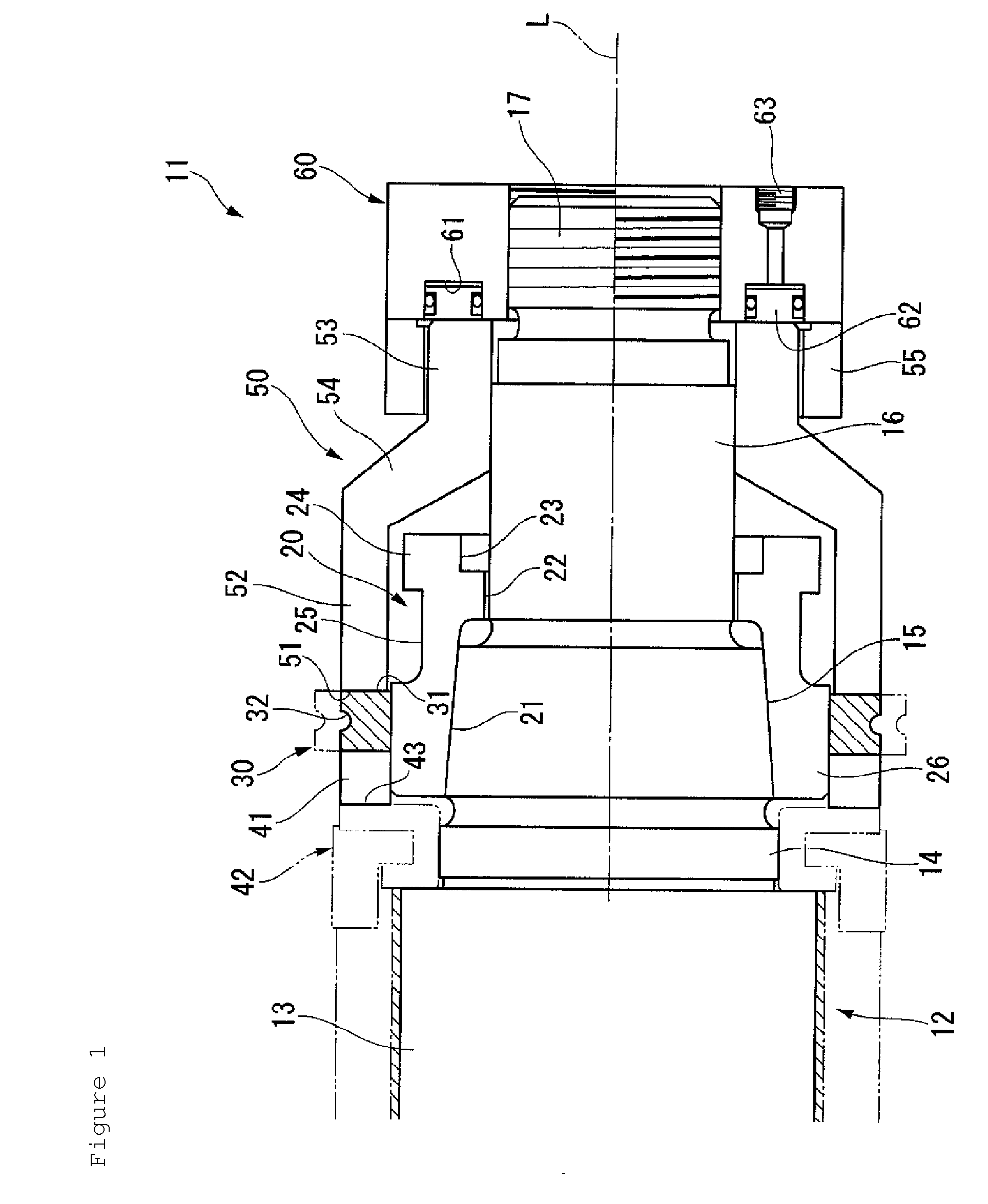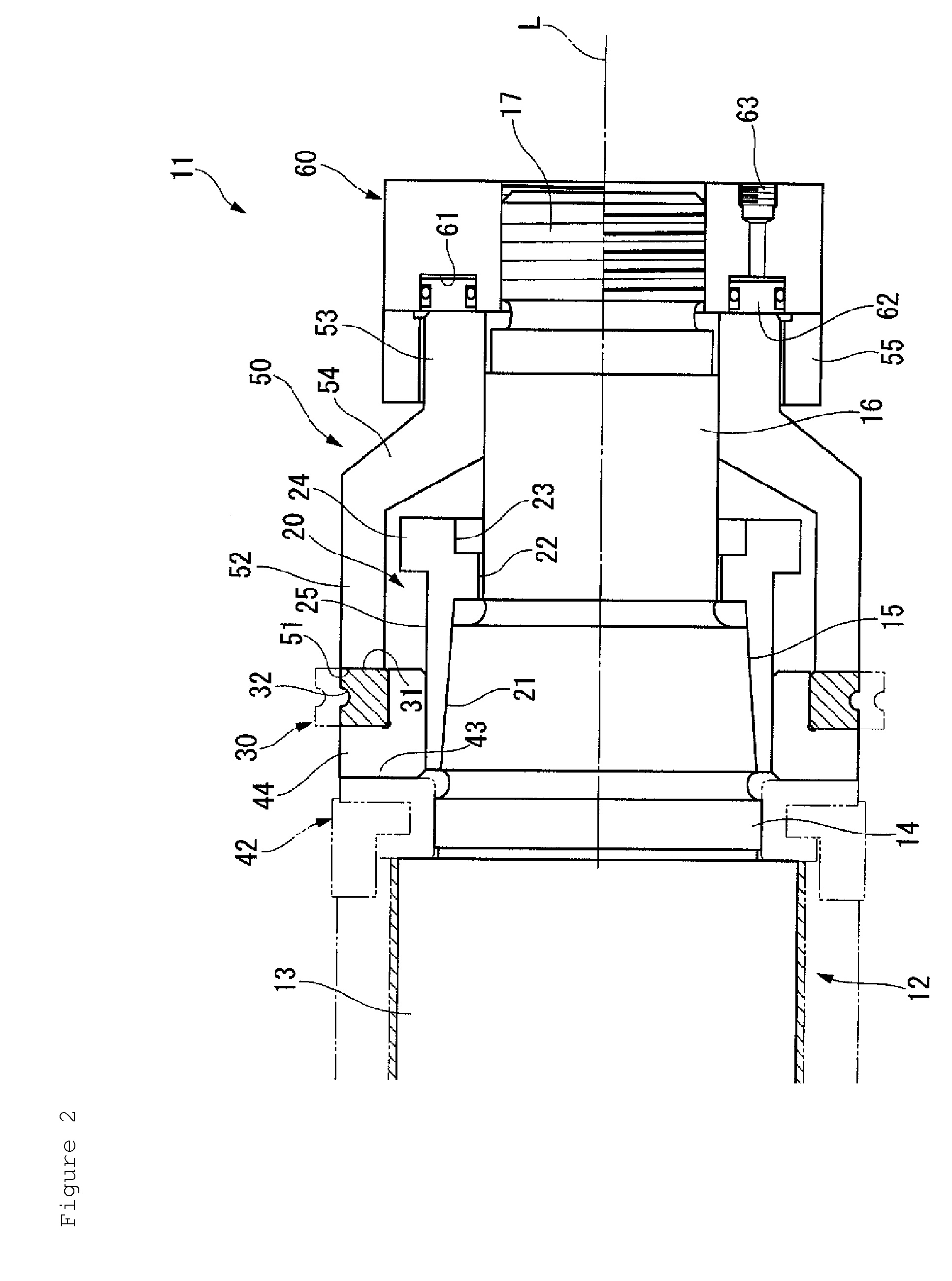Rolling roll, rolling ring, rolling mill, and rolling roll assembling method
a technology of rolling mills and rolling rolls, which is applied in the direction of manufacturing tools, mechanical equipment, and portable power-driven tools, etc., can solve the problems of general brittleness and inability to withstand tensile force, cracks in the outer circumferential surface, and inability to satisfactorily roll, so as to reduce the amount of hard materials, prevent cracks, and reliably prevent tensile stress
- Summary
- Abstract
- Description
- Claims
- Application Information
AI Technical Summary
Benefits of technology
Problems solved by technology
Method used
Image
Examples
eighth embodiment
[0088]Next, FIG. 5 through FIG. 12 show the additional embodiments of the present invention, wherein portions that are in common with the previous embodiments shown in FIG. 1 through FIG. 4 are assigned the same symbols, and the explanations thereof are simplified. Aspects that are common to these embodiments include, first, that the inner circumferential support part is formed integrally with the sleeve member 20, the same as in the previous embodiment; namely, the tapered hole 21, which is capable of mating with the tapered part 15 of the shaft 12, and an inner circumferential support part 27, which is a constant diameter part and has an outer diameter that is constant and just slightly smaller than the inner diameter of the rolling ring 30, are formed coaxially in the sleeve member 20, the inner circumferential support part 27 is used to support the inner circumferential surface of the rolling ring 30 in the state wherein the sleeve member 20 is mated to the tapered part 15 so as...
first embodiment
[0090]Furthermore, in certain embodiments, the flange part 24 and the constant diameter part 25, the outer diameter of which is smaller than the projecting part (the inner circumferential support part), are not provided to the sleeve member 20 as in the first embodiment, and the sleeve member 20 has an L shaped cross section. In addition, the outer diameter of the side surface support part 28 is substantially the same as the discard outer diameter of the rolling ring 30; however, as shown in the drawing, it is slightly smaller. Furthermore, in some embodiments, multiple (2) forming grooves 32 are formed in the rolling ring 30 lined up in the directions of the axis L; in contrast, other embodiments, only one forming groove 32 is formed, the same as in the initial embodiments.
[0091]In addition, another aspect common to certain embodiments is that, on the side where the side surface support part 28 is not integrally formed with the sleeve member 20, a ring shaped spacer 47 is formed th...
seventh embodiment
[0097]Next, the pressing nut 70 is screwed to the male thread part 17, and one end surface of the pressing nut 70 contacts the sleeve member 20 in certain embodiments and contacts the spacer 47, which juts out from the inner circumferential support part 27 toward the other end side, in an embodiment. In addition, a pressing ring 71 is disposed by loosely inserting it on the outer circumference of the pressing nut 70, and the hydraulic nut 60 is further screwed to the male thread part 17 from the other end side. Here, the pressing nut 70 is ring shaped with a square cross section and has an outer diameter that is larger than that of the inner circumferential support part 27 of the sleeve member 20 and smaller than that of the side surface support part 28, which is formed integrally with the sleeve member 20, and the spacer 47 that is in the seventh embodiment; furthermore, a female thread part 70A, which screws to the male thread part 17, is formed in the inner diameter part of the p...
PUM
| Property | Measurement | Unit |
|---|---|---|
| outer circumference | aaaaa | aaaaa |
| circumference | aaaaa | aaaaa |
| inner diameter | aaaaa | aaaaa |
Abstract
Description
Claims
Application Information
 Login to View More
Login to View More - R&D
- Intellectual Property
- Life Sciences
- Materials
- Tech Scout
- Unparalleled Data Quality
- Higher Quality Content
- 60% Fewer Hallucinations
Browse by: Latest US Patents, China's latest patents, Technical Efficacy Thesaurus, Application Domain, Technology Topic, Popular Technical Reports.
© 2025 PatSnap. All rights reserved.Legal|Privacy policy|Modern Slavery Act Transparency Statement|Sitemap|About US| Contact US: help@patsnap.com



